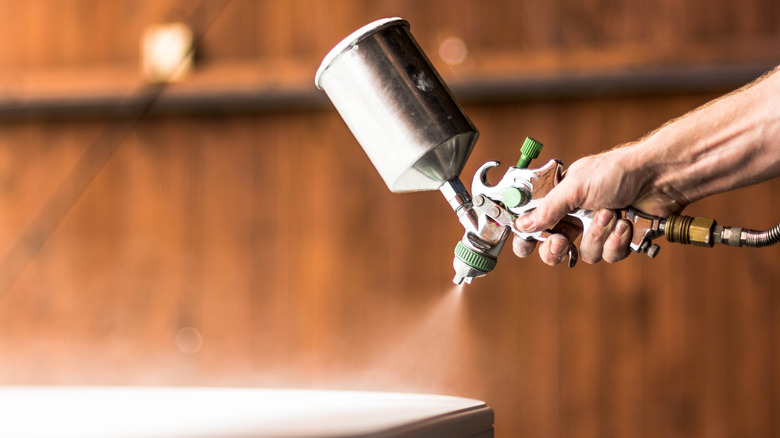Get A Perfect Finish Every Time When Using A Paint Sprayer Tool On DIYs
Spend enough time in the DIY world, and you're bound to come across people who swear by paint sprayers as the only way to get a professional-looking finish. There are indeed many benefits to using a paint sprayer, but there's also a bit of a learning curve. To get a perfect finish every time, you'll need to properly prep the paint sprayer, paint, and surface, and use proper spraying technique.
Compared to using a brush and roller, a paint sprayer gets the job done much faster and requires less physical strain. With practice, it can result in fuller, more uniform coverage, even on difficult corners and details. On the other hand, a sprayer uses more paint than a brush and roller, and there's a much greater risk of overspray (in other words, splatter). Paint sprayers are also more of an upfront investment (although you can always rent a paint sprayer at Home Depot or another home improvement store).
Preparation and technique are key
As with any painting job, cleaning and sanding the surface before painting is vital for achieving a smooth finish. Place the object horizontally if possible to prevent drips, and carefully cover all nearby items to dodge getting any overspray on them. To avoid a clogged paint sprayer, filter the paint first, then add a little water to the paint until it has a pancake-batter-like consistency. Before you start on your DIY project, practice using the sprayer on a piece of cardboard and adjust the settings as needed for your project and paint. The spray pattern should be full and even on all sides.
As for technique, make sure you're no more than 12 inches away from the surface, pointing the sprayer straight forward rather than at an angle. Begin moving your arm before you pull the trigger, and don't release the trigger until after you've passed the surface. Overlap each pass of the sprayer by about half and stick to a consistent distance and speed; this helps ensure uniformity. Check the nozzle every so often and remove any clogs.
For a perfect finish, let each coat dry fully before applying the next, and don't touch or move the project until the paint has fully cured. This can take a few weeks, depending on the paint. Lastly, if you need to make fixes, use the sprayer again rather than a roller or brush, or there will be an obvious disruption in the finish.

